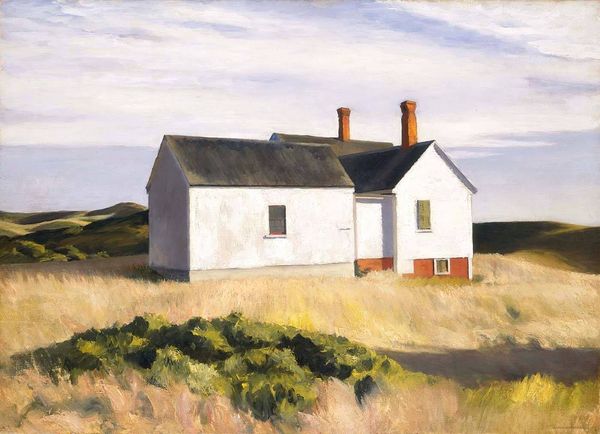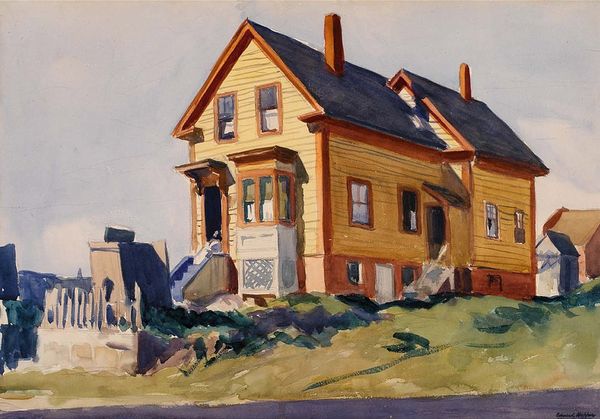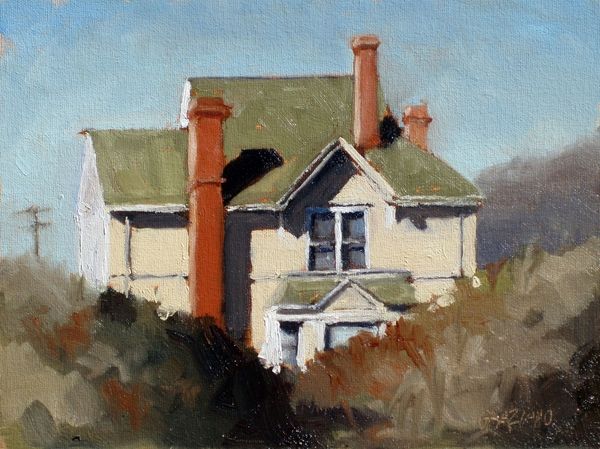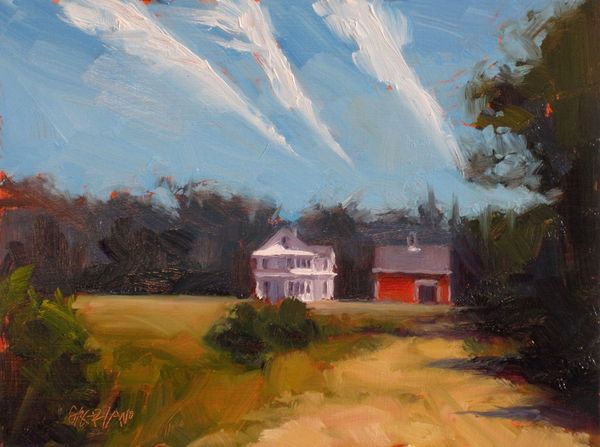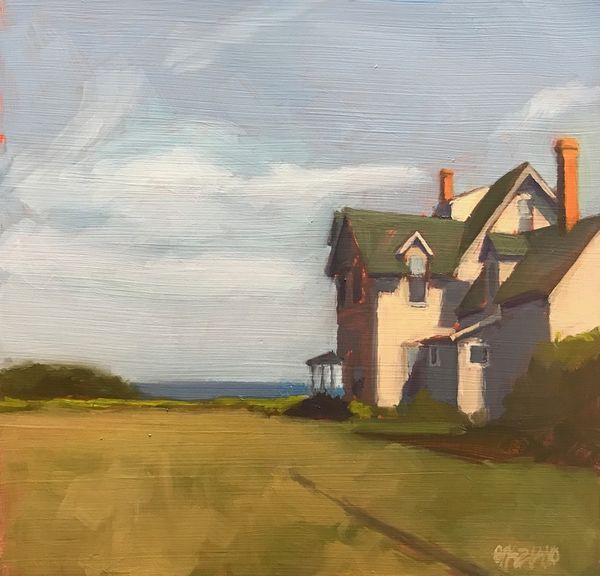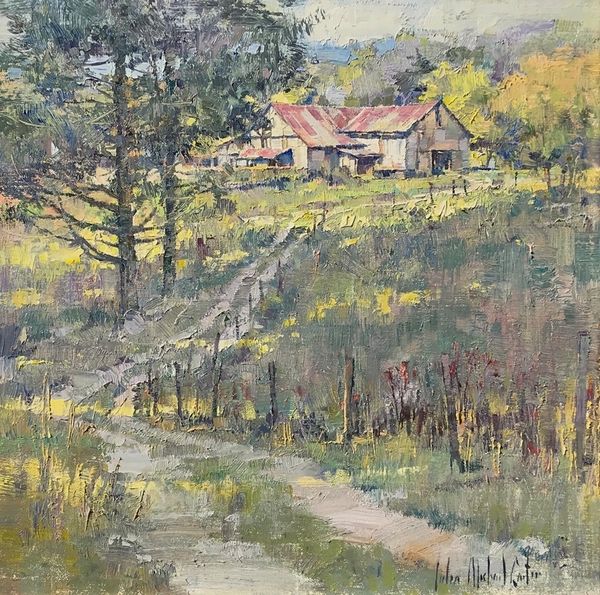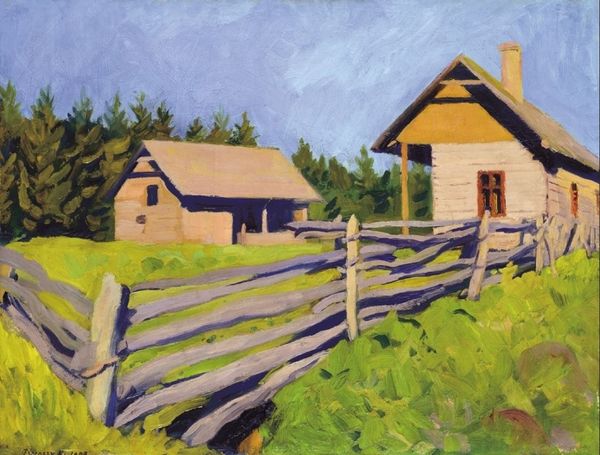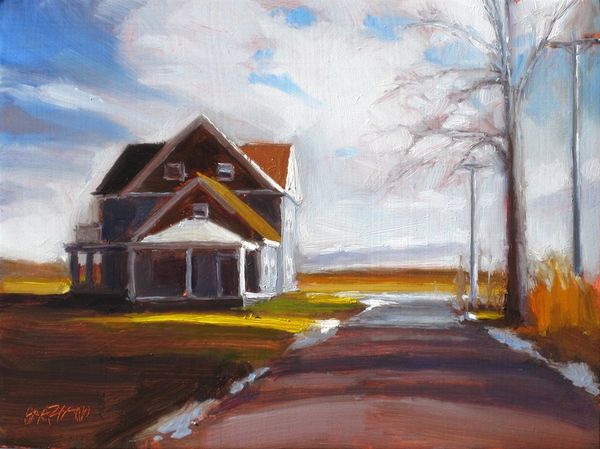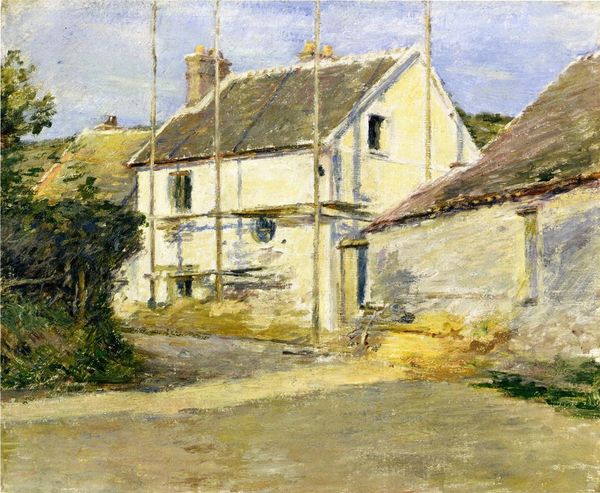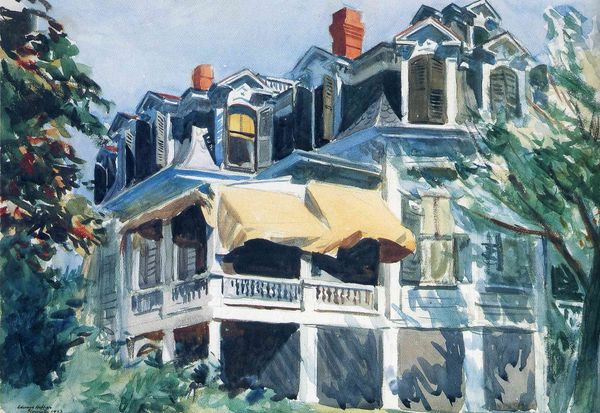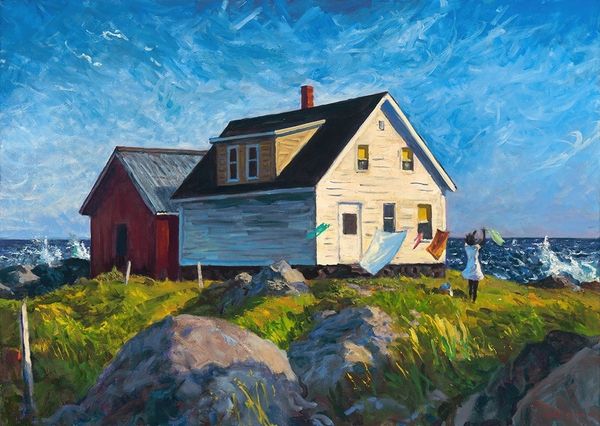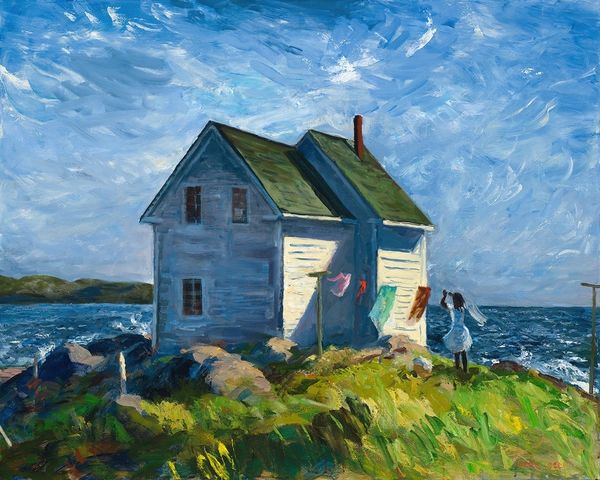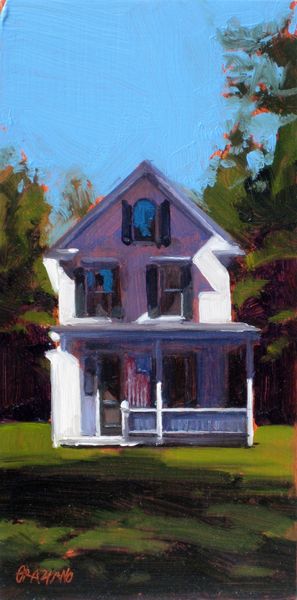
painting, oil-paint
#
painting
#
oil-paint
#
landscape
#
house
#
oil painting
#
cityscape
#
modernism
#
realism
#
building
Copyright: Edward Hopper,Fair Use
Curator: This is Edward Hopper’s “House by a Road,” painted in 1940. Editor: Well, right off the bat, that lonely house gives me the chills. The muted palette, the simple planes and shapes—it just screams isolation. You can almost feel the quiet desolation radiating from the oil paint on that canvas. Curator: Indeed. Hopper was very attuned to the specific mood of the American landscape. Here he captures this period through the motif of vernacular architecture, setting this common style of house—perhaps onemass produced or a kit—on an empty street to talk about the nation and its society. Consider also how Modernism elevated common styles in opposition to fine art. Editor: And that material context is everything, isn't it? The thick application of oil, the almost crude rendering—it speaks volumes. Look closely, it almost appears built, layers of social and natural experience built up. No attempt at smoothness or polish, this is direct labor staring back at us. What do you make of it, and how did his choices help this conversation? Curator: It’s fascinating. In that historical moment, his realist painting felt so disruptive within the avant-garde movements that had permeated New York. It highlights the power structures embedded in the art world itself, the gatekeepers determining what constitutes high art versus popular representation. You mentioned texture; this house is indeed so common. In other words, how does the popular speak to the elite? Editor: Hopper does an expert job playing with our consumption patterns as a culture. It has to do with class. The very thing some would view as commonplace and valueless is shown, by Hopper, to represent a whole. An encapsulation of a whole movement of peoples. What looks like a simple house becomes an entire representation, layer upon layer, of the everyday experiences and hard labors in many of these citizens’ lives. The material representation stands in place of any traditional portrait. Curator: Yes, the material qualities really emphasize how such paintings participate in defining the country’s understanding of itself, particularly regarding this question of class division. It is so direct, there is almost an inherent narrative quality due to this construction and location choice. Editor: I will say it gets to me that there seems a feeling of emptiness. Something sad here to take in as a viewer. Curator: Ultimately, the painting reflects and perpetuates our perceptions. Thank you. Editor: A beautiful thing can indeed reveal to us what is difficult.
Comments
No comments
Be the first to comment and join the conversation on the ultimate creative platform.
